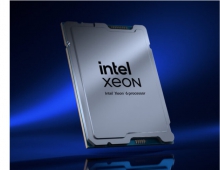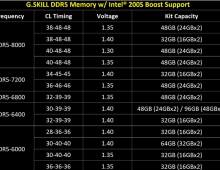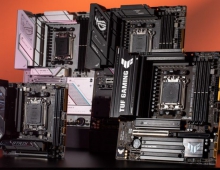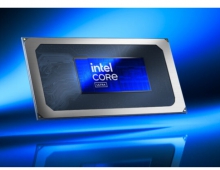
Intel Challenges AMD With New Chips
Intel's latest chips will conserve more power than the company's current processors and deliver vastly faster graphics images as the chipmaker seeks to push its technology beyond just PCs.
Intel's Core i7 chip, based on a design code-named Nehalem, will start production in the fourth quarter of this year, and ultimately will be used beyond just desktop machines and computer servers that are the backbone of corporate networks.
Pat Gelsinger, head of Intel's digital enterprise group, on Tuesday demonstrated computers running core i7, at the Intel Developer Forum conference in San Francisco on Tuesday. He and Dadi Perlmutter, who heads Intel's mobility group, both said Intel is counting on the proliferation of mobile devices -- such as handheld computers, super-slim laptops and smart phones -- that are connected to the Internet to help boost profits.
The company's first desktop PC chips branded Intel Core i7 processors and initial energy-efficient, high-performance server products (codenamed "Nehalem-EP") will be first to production. Intel is also planning to manufacture a second server derivative designed for the expandable sever market ("Nehalem-EX"), and desktop ("Havendale" and "Lynnfield") and mobile ("Auburndale" and "Clarksfield") client versions in the second half of 2009.
Intel is also planning to manufacture a second server derivative designed for the expandable sever market ("Nehalem-EX"), and desktop ("Havendale" and "Lynnfield") and mobile ("Auburndale" and "Clarksfield") client versions in the second half of 2009.
Perlmutter cited a goal of 1 billion mobile devices using basic Intel chip designs -- called Intel Architecture -- being sold in the next 10 years. Because of Intel's recently launched, tiny, power-sipping Atom chip, battery life in Internet-connected devices will rise, they said.
Intel also recently started selling its Centrino 2 collection of chips used in notebook PCs that it says promise longer battery life. But new high-speed wireless connection technologies such as WiMax could hamper battery life.
Nehalem's design will allow for microprocessors that can boost the speed of individual cores of a chip in response to the workload demand by diverting power from other parts of the chip that aren't being used.
Intel also said that the Nehalem design boosts the speed at which data can be shunted from memory in the computer to the microprocessor. It achieved that by putting the memory-controller function into the microprocessor, rather than having the memory and the processor on two different chips. By doing so, Intel matched a capability that rival AMD has used since 2003.
The next-generation Core microarchitecture also features Intel Hyper-Threading Technology delivering up to 8-threaded performance capability on 4 cores in the initial versions and better memory bandwidth thanks to the new QuickPath Interconnect. QuickPath is a technology that connects processors, chipsets and memory together, and delivers up to three times the memory bandwidth of previous generation Core microarchitecture solutions, Intel claims.
Intel also said that the new Xeon processor X7460 with 6 cores and 16MB L3 cache for expandable servers launching in September has already broken multiple performance world records.
All of Intel's processors will be based on the Nehalem microarchitecture starting in 2009, Intel said.
Pat Gelsinger, head of Intel's digital enterprise group, on Tuesday demonstrated computers running core i7, at the Intel Developer Forum conference in San Francisco on Tuesday. He and Dadi Perlmutter, who heads Intel's mobility group, both said Intel is counting on the proliferation of mobile devices -- such as handheld computers, super-slim laptops and smart phones -- that are connected to the Internet to help boost profits.
The company's first desktop PC chips branded Intel Core i7 processors and initial energy-efficient, high-performance server products (codenamed "Nehalem-EP") will be first to production. Intel is also planning to manufacture a second server derivative designed for the expandable sever market ("Nehalem-EX"), and desktop ("Havendale" and "Lynnfield") and mobile ("Auburndale" and "Clarksfield") client versions in the second half of 2009.
Intel is also planning to manufacture a second server derivative designed for the expandable sever market ("Nehalem-EX"), and desktop ("Havendale" and "Lynnfield") and mobile ("Auburndale" and "Clarksfield") client versions in the second half of 2009.
Perlmutter cited a goal of 1 billion mobile devices using basic Intel chip designs -- called Intel Architecture -- being sold in the next 10 years. Because of Intel's recently launched, tiny, power-sipping Atom chip, battery life in Internet-connected devices will rise, they said.
Intel also recently started selling its Centrino 2 collection of chips used in notebook PCs that it says promise longer battery life. But new high-speed wireless connection technologies such as WiMax could hamper battery life.
Nehalem's design will allow for microprocessors that can boost the speed of individual cores of a chip in response to the workload demand by diverting power from other parts of the chip that aren't being used.
Intel also said that the Nehalem design boosts the speed at which data can be shunted from memory in the computer to the microprocessor. It achieved that by putting the memory-controller function into the microprocessor, rather than having the memory and the processor on two different chips. By doing so, Intel matched a capability that rival AMD has used since 2003.
The next-generation Core microarchitecture also features Intel Hyper-Threading Technology delivering up to 8-threaded performance capability on 4 cores in the initial versions and better memory bandwidth thanks to the new QuickPath Interconnect. QuickPath is a technology that connects processors, chipsets and memory together, and delivers up to three times the memory bandwidth of previous generation Core microarchitecture solutions, Intel claims.
Intel also said that the new Xeon processor X7460 with 6 cores and 16MB L3 cache for expandable servers launching in September has already broken multiple performance world records.
All of Intel's processors will be based on the Nehalem microarchitecture starting in 2009, Intel said.




















